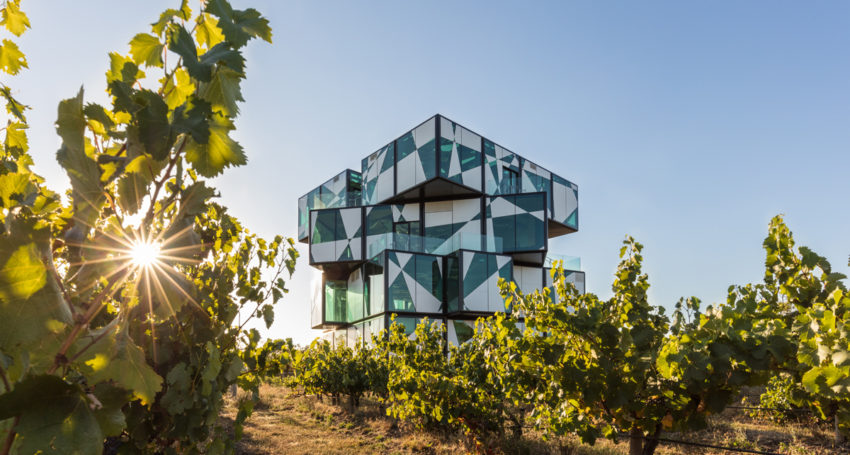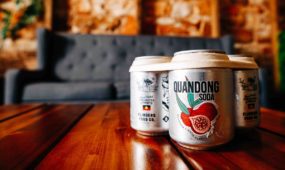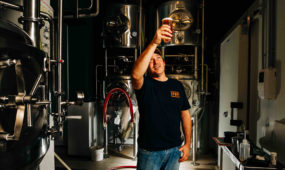Australian cellar door survey provides clues to direct wine sales success
Food & Wine
The opportunity for matched food and wine flights and the perceived value of paid tastings are among the key early findings of Wine Australia’s first cellar door and direct-to-consumer survey.

Sign up to receive notifications about new stories in this category.
Thank you for subscribing to story notifications.

Wine Australia today released the first findings of the survey it conducted with 180 wine companies following the 2017/18 financial year.
Launched at the inaugural Wine Industry Suppliers Australia IMPACT Conference in Adelaide, the survey shows that cellar doors are the driving force behind direct-to-consumer sales in Australia, accounting for 44 per cent of DTC revenue ahead of wine clubs and mail orders.
Overall, direct-to-consumer sales accounted for 10 per cent of all domestic wine sales for the survey’s respondents.
However, wineries that produced less than 1000 cases relied on direct avenues for 68 per cent of sales and wineries in the 1000-5000 case bracket achieved 40 per cent of sales through DTC channels. Wine brands with production greater than 50,000 cases recorded just 4 per cent.
Almost three quarters of visitors to cellar doors purchased wine, and this percentage was higher at small wineries.
Wine Australia Market Insights Manager Peter Bailey told the conference this was because small wineries were usually less crowded and could spend more time talking about the wine with tasters while brands from larger wineries were also more widely available on retail shelves.
He said although 86 per cent of respondents offered food, such as a restaurant or platters, only 28 per cent of cellar doors offered matched food and wine tasting experiences.
“That’s an opportunity, particularly if you are looking at the China market,” Bailey said.
“Research from Wine Intelligence shows that 89 per cent of Chinese consumers associate Australian wine with food friendly wines so to me that seems an opportunity to increase food and wine matching in cellar doors.”
The survey found that wineries were increasingly offering value added services and activities such as blending classes, live music and playgrounds aimed at attracting more visitors and diversifying revenue streams.
Only 29 per cent of cellar doors charged for standard tastings but wineries with production under 20,000 cases were more likely to have a fee.
Bailey said charging for a tasting actually increased the likelihood of a sale.
“There is perceived value when consumers interact with wine brands that either charge or don’t charge for tastings but when a wine brand gives tastings for free, the perceived brand value is lower and in most cases this correlates to lower conversion rates as well as average order values,” he said.
The anonymous online survey, conducted by Harrison Research on behalf of Wine Australia, was sent to 2091 Australian wine producers in August and generated the 180 responses.
Bailey said it was hoped future surveys would attract more respondents as the project gained momentum
He said the purpose of the survey was to develop a series of key benchmarks and statistics to help wineries develop their wine tourism and direct-to-consumer activities through the provision of accurate, measurable data over time.
“This is really the first time we’ve actually benchmarked and going forward we’ll be able to measure changes to see what’s happening in the space,” Bailey said.
Californian direct-to-customer wine sales expert Sandra Hess was the keynote speaker at the WISA conference titled “Making a Direct IMPACT”.
She said sharing the story about the wine at the cellar door was crucial to building an emotional connection to the brand and increasing the likelihood of customers making future purchases.
“They want to understand who started the winery and why, they want to understand the passion behind the wine brand and how they can become a part of that,” Hess said.
“Then they are not only going to leave with wine in hand but they are going to leave with stories that they love to talk about with their friends and clients.”
However, Hess said finding ways to re-engage with customers beyond that first visit was needed to develop an ongoing relationship.
“It’s not the first sale that is the most important in direct-to-consumer wine, it’s the second sale and beyond,” the founder of DTC Wine Workshops said.
“If we don’t give them the opportunity to re-engage with the brand they had a great time with the first time then we are leaving money on the table.”
The 74 per cent purchase rate at Australian cellar doors was higher than in the United States, which was about 66 per cent, Hess said.
“This report is the beginning of something very important here in Australia, this is going to be a great baseline for you to chew on together and get into your respective wine regions and have a conversation about what’s happening in your environment and then two or three years down the road you’re going to have some concrete data to start comparing apples with apples,” she told the conference.
The Wine Industry Impact Awards will be held at the Adelaide Town Hall tonight.
WISA Executive Officer Matt Moate said the research was imperative to define the capability gaps in Australian direct-to-consumer wine sales.
“The supply sector will be able to utilise this data to deliver opportunities to accelerate producers’ knowledge and skills resulting in a new level of competitiveness in this space,” he said.
The full Wine Australia survey results will be released on October 31.
The survey incorporates and expands on Wine Australia’s annual small winemaker production and sales survey.
Jump to next article



